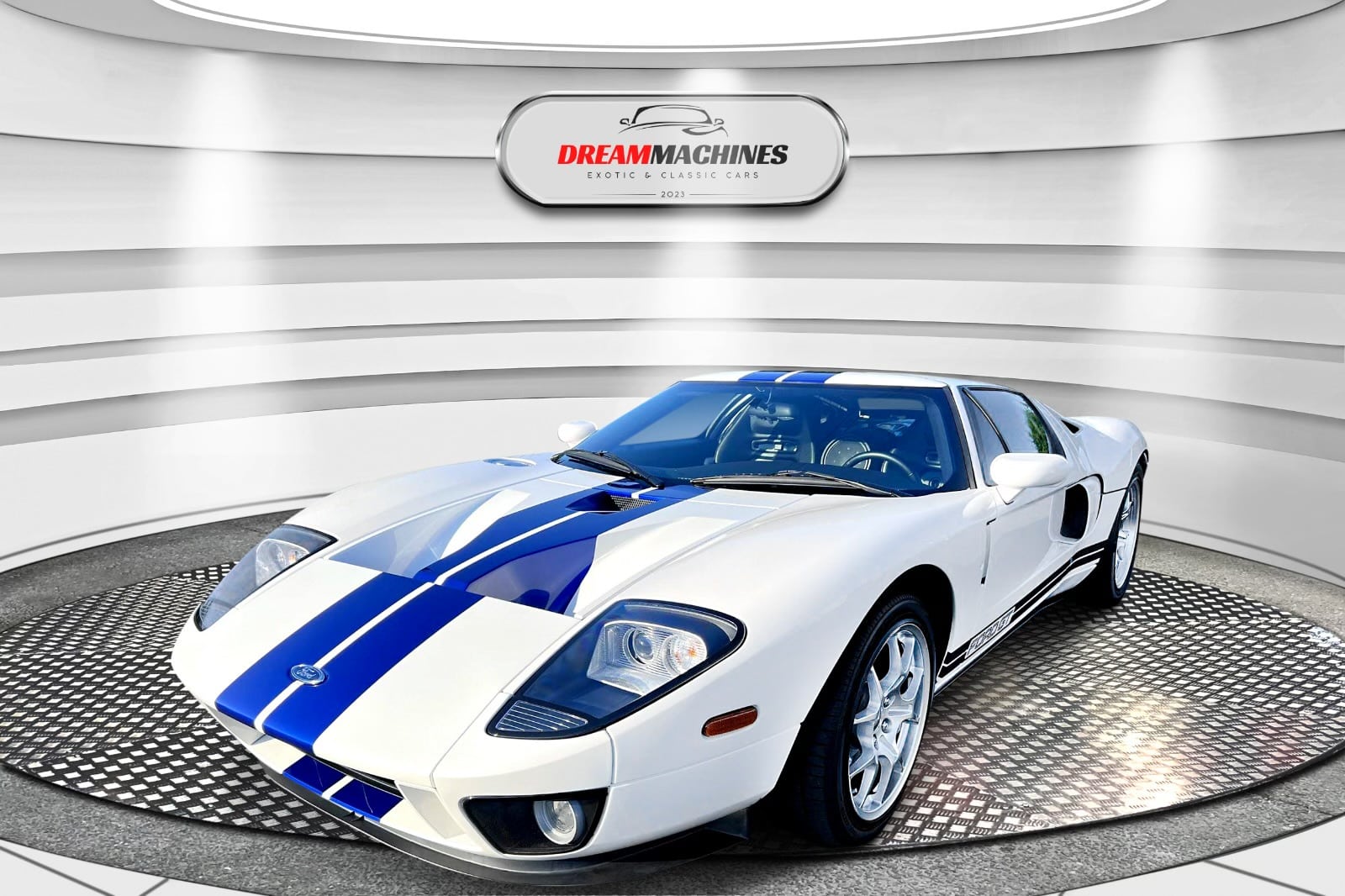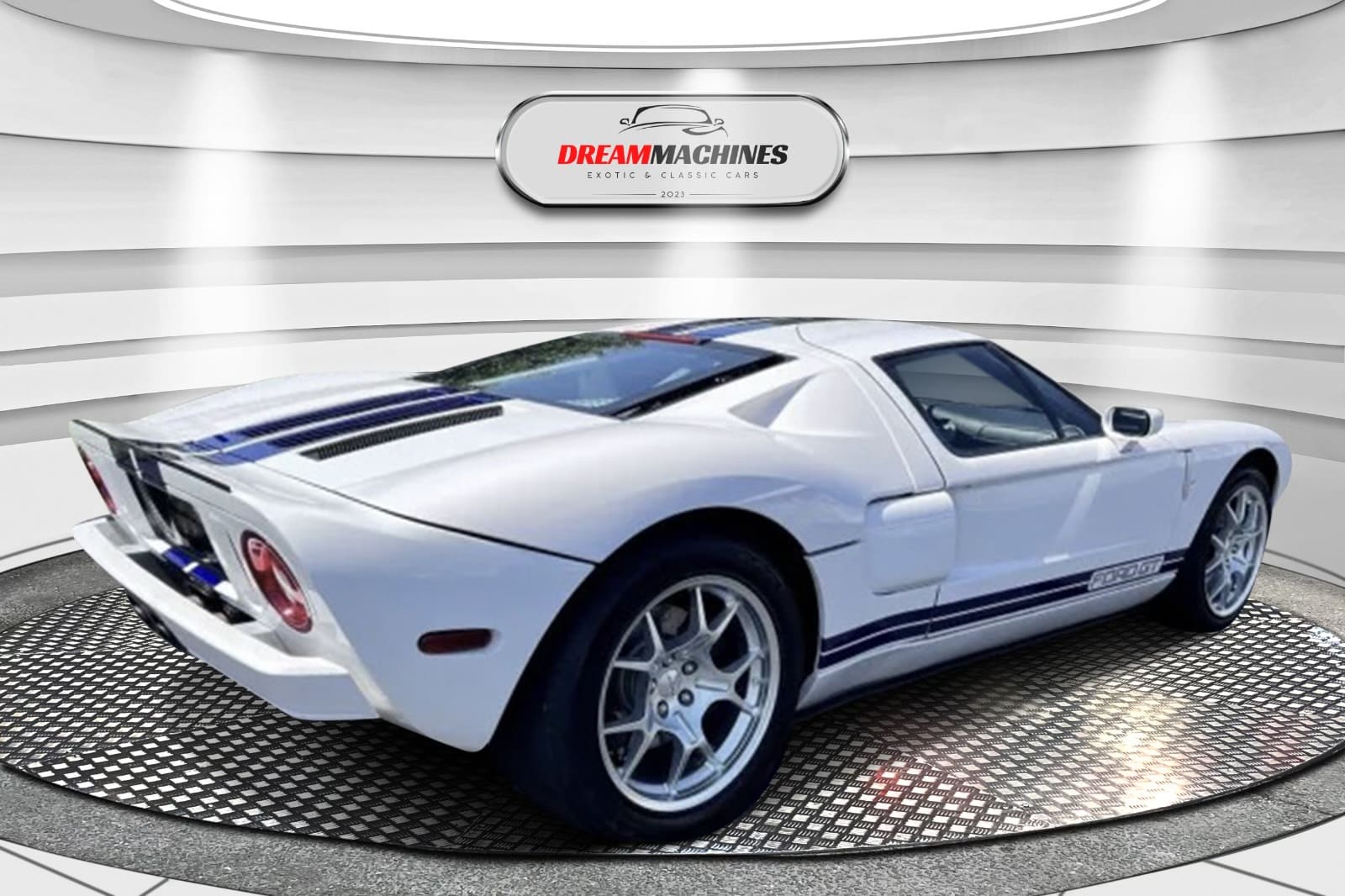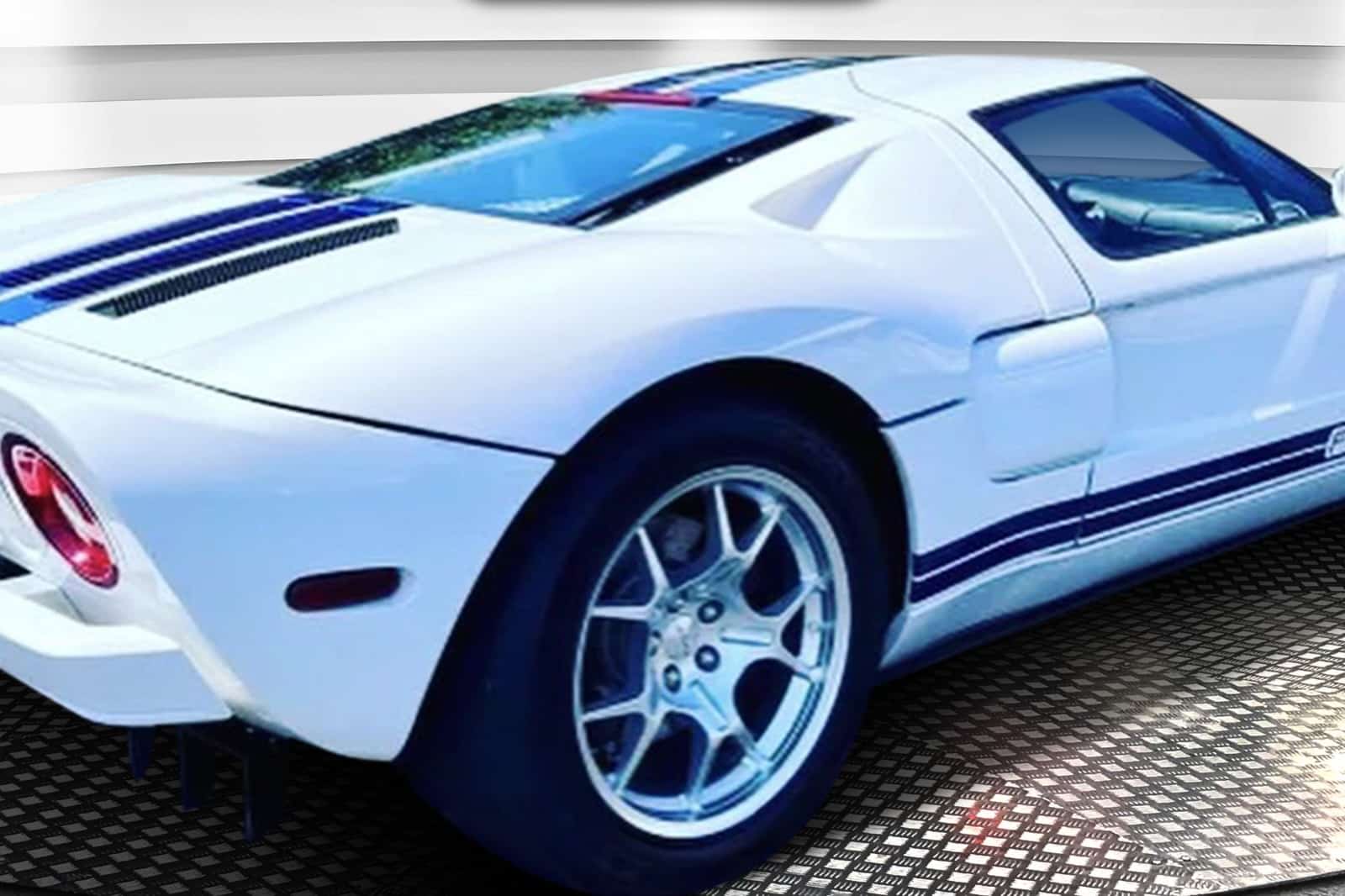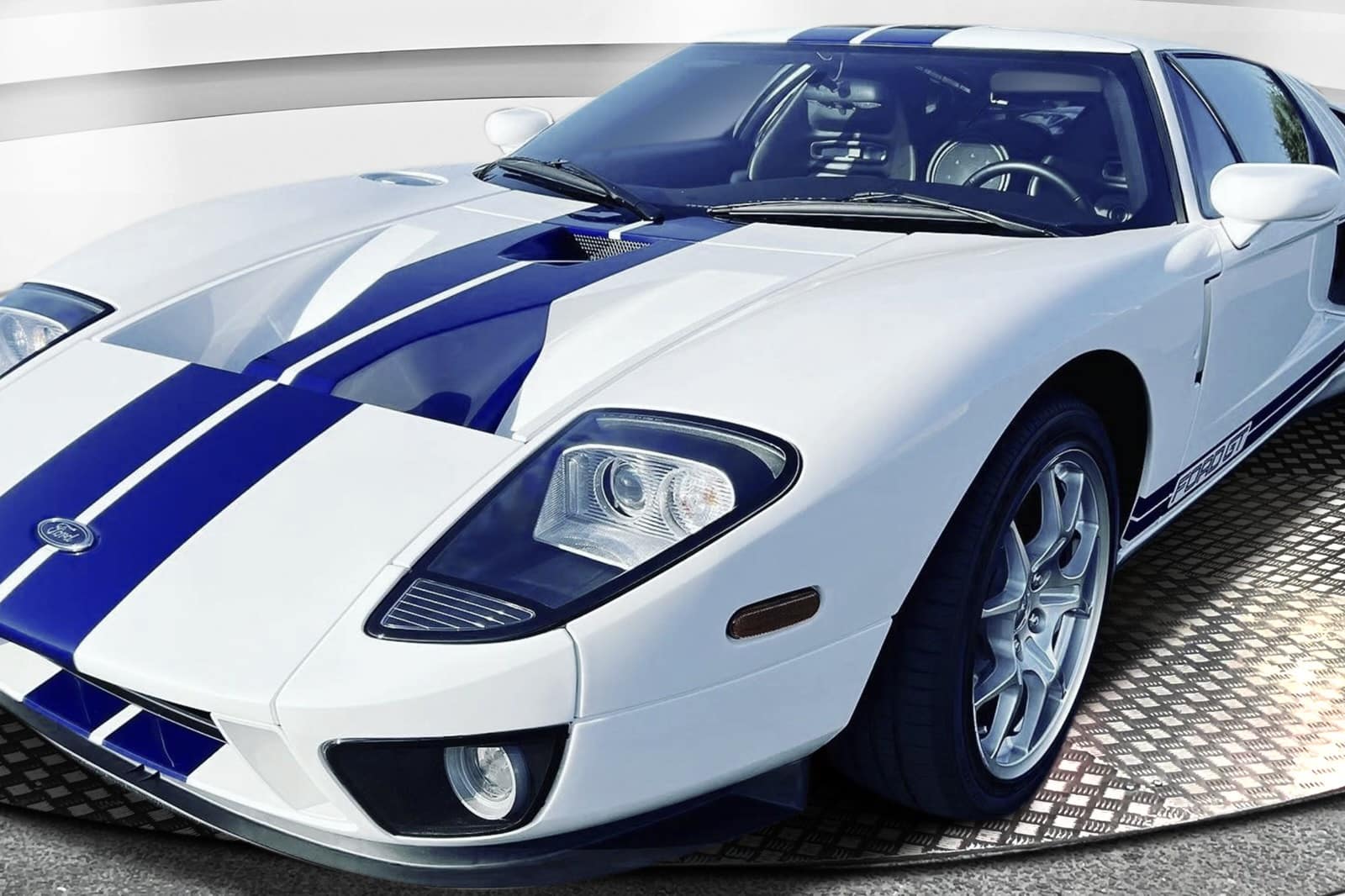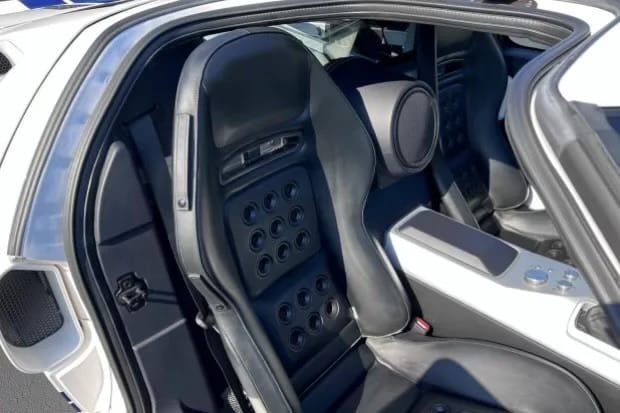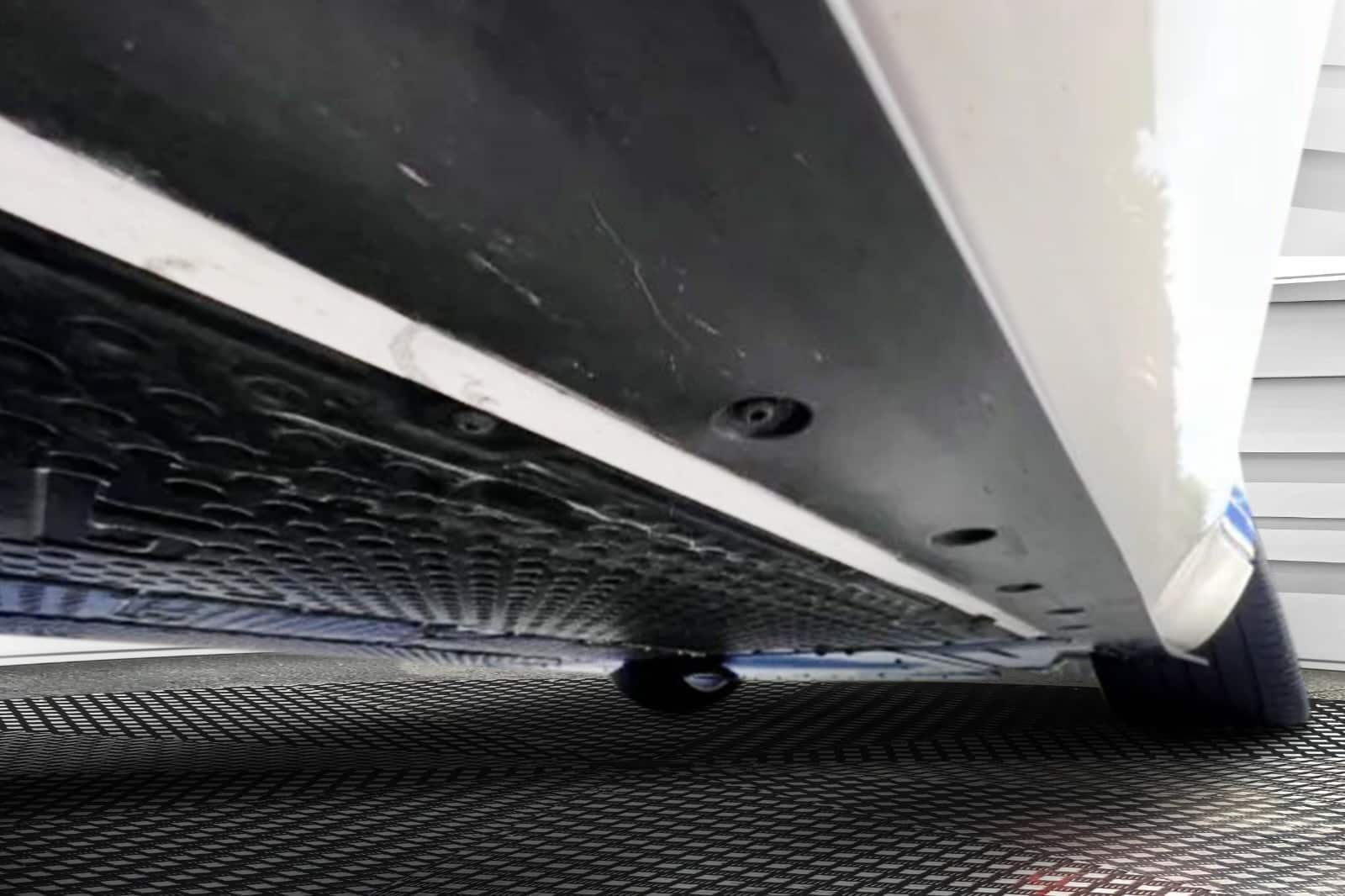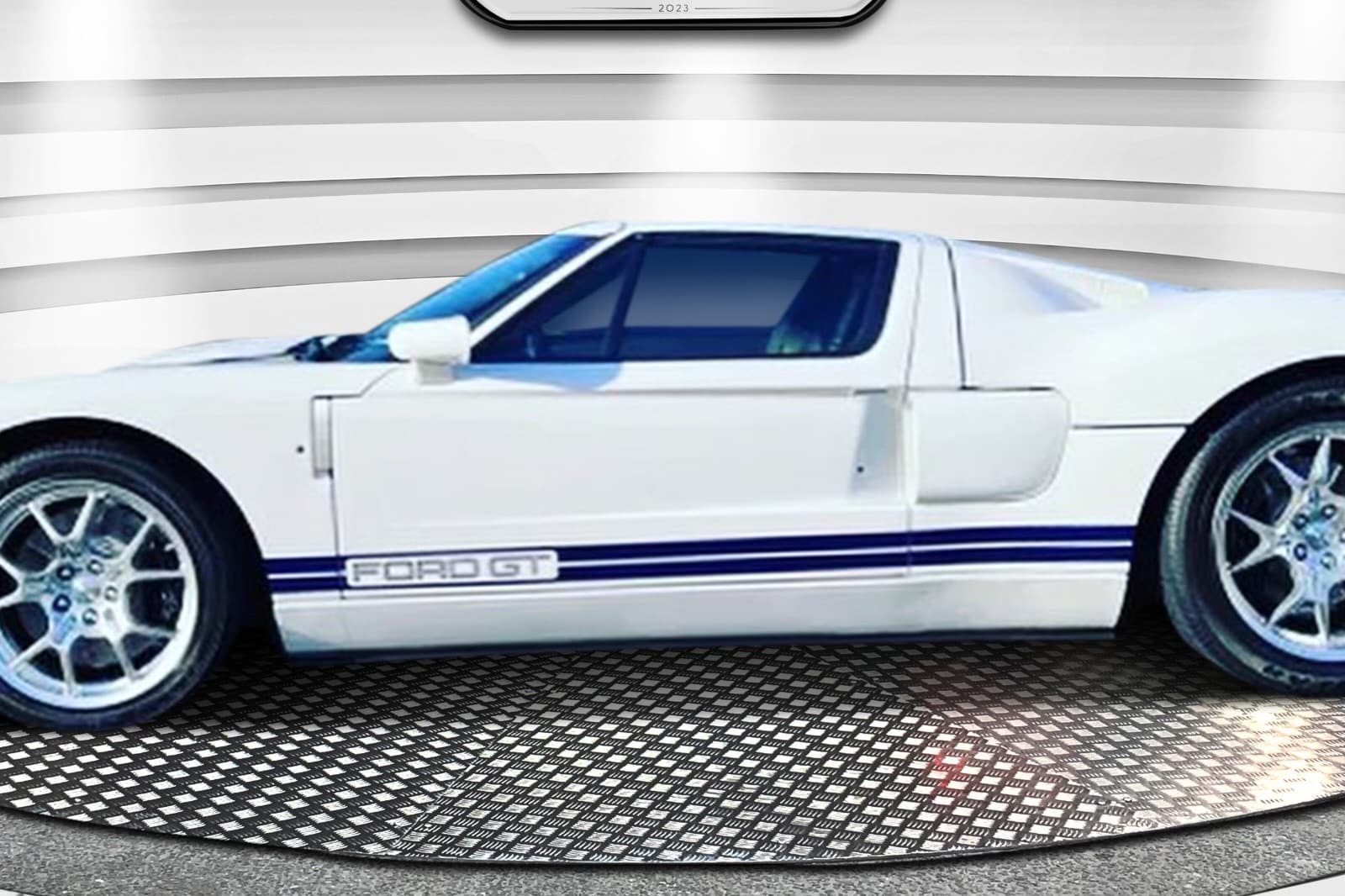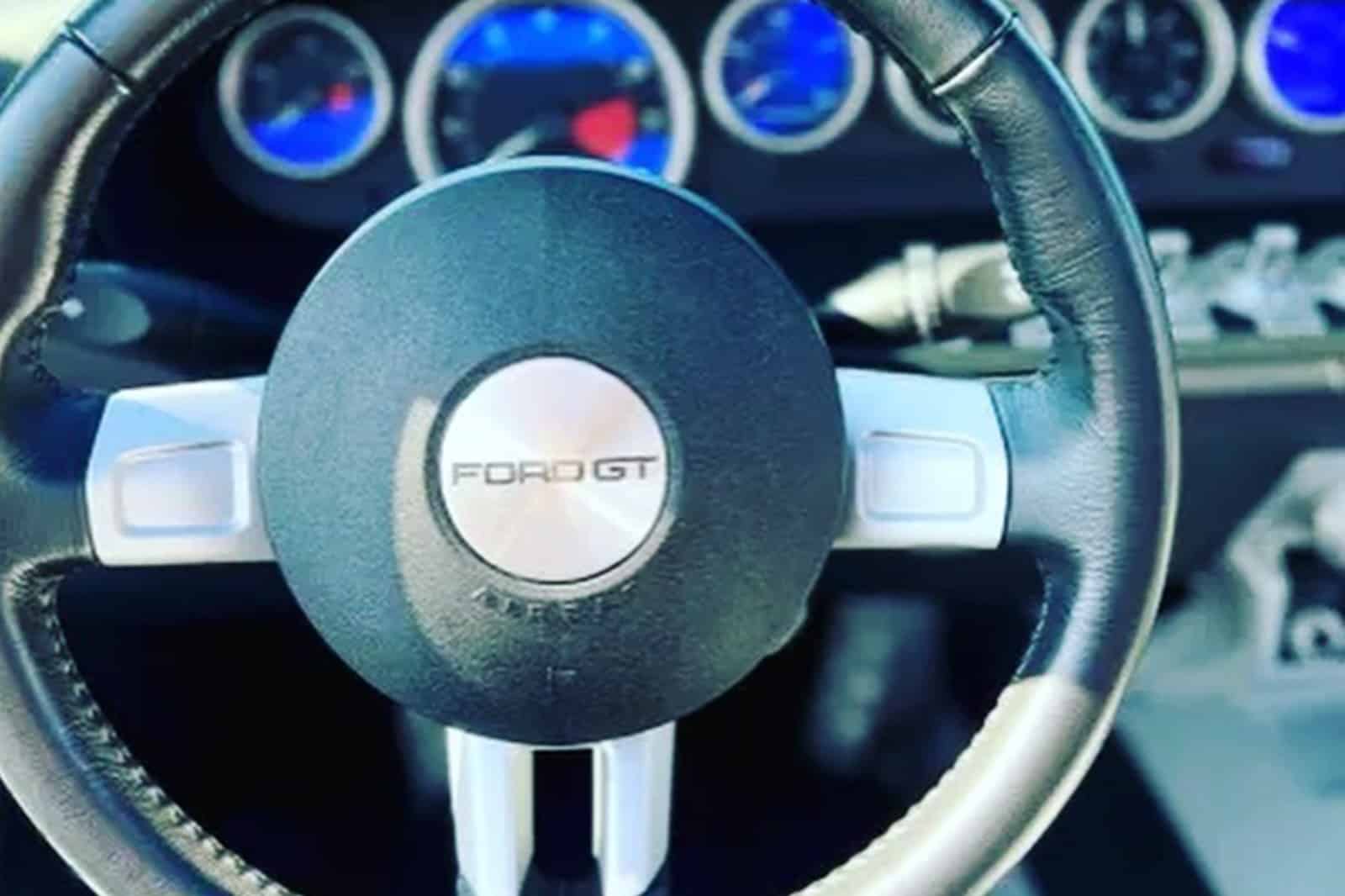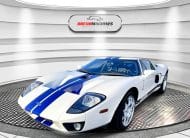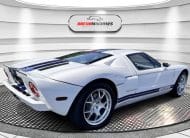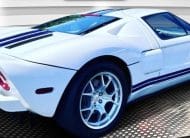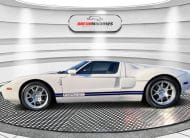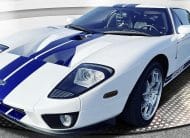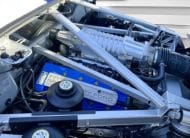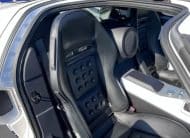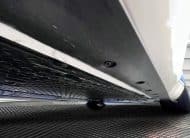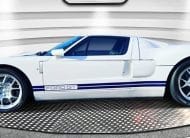Vehicle overview
(courtesy of Edmunds.com)
Ford has been toying with the prospect of recreating the GT40 legend almost since the original model went out of production in the late 1960s. The idea had several false starts throughout the 1990s, including the overly angular GT90 concept car. But just as with the original GT40, the current Ford GT comes from a desire to beat the world's best sports carmaker, Ferrari, at its own game.
During the 1960s, the game was winning the 24 Hours of Le Mans, and Henry Ford II wanted to prove that Ford could take on Ferrari at Le Mans and win. He succeeded in 1966 when the GT40 swept the podium, putting an end to Ferrari's domination of the world's most respected race circuit. The GT40 went on to win Le Mans in 1967, 1968 and 1969, forever establishing the car's -- and Ford's -- place in the annals of racing history. Fast-forward 40 years and we again see Ford attempting to trump Ferrari's dominance, only this time the focus is on street performance, specifically the performance benchmark set by the F430.
Like the F430, the Ford GT is a two-seat sports car that features a super-rigid aluminum chassis, a midengine V8 and an advanced, fully independent suspension system. Wrapped around these high-tech components is a classic shell that looks as if it just drove out of the winner's circle at the 1966 24 Hours of Le Mans. In fact, one of the biggest challenges the Ford GT team faced was to develop and combine all of the latest technology in chassis, suspension and engine design while retaining the car's classic body lines. The team succeeded, but only because the current model is much larger overall than the original version. That's not a bad thing, as the original's cabin was cramped and awkward while the new model offers plenty of legroom and hiproom. Headroom is adequate for those up to 6 feet 2 inches tall, but taller folks, particularly those who are long in the torso, will find their noggins uncomfortably close to the GT's roof when seated. Technically, the area immediately above the driver's and passenger's head isn't the roof, but an extension of each door that wraps well into the roof panel -- just as it did in the original version. This makes getting in and out of the Ford car a tricky process.
Overall, however, the GT's 550 horsepower and incredibly stable driving dynamics make it one of the most capable cars ever produced. Factor in the car's price, which undercuts similar Italian machinery by tens of thousands of dollars, and you've got a reborn 2006 Ford GT that would make Henry Ford II very proud indeed.
Performance & mpg
A hand-built, all-aluminum 5.4-liter V8 powers the Ford GT. It makes a total of 550 hp at 6,500 rpm with the help of a Lysholm supercharger and intercooler. Peak torque is 500 pound-feet at 3,750 rpm. The engine is hooked to a six-speed Ricardo manual transmission that directs power to the rear wheels. No automatic or sequential manual transmission is offered. The GT's combination of horsepower, torque and 315/40 series rear tires allows the Ford car to slingshot to 60 mph in around 3.5 seconds and shred the quarter-mile in about 12 seconds flat.
Safety
Antilock brakes are standard, but stability control, side airbags and traction control are unavailable on the Ford GT. The passenger seat includes both a child seat tether and ISOFIX mounting hardware.
Driving
While rear visibility and the entry/exit process are typical of an exotic car, the GT's on-road behavior is closer to a typical sport coupe in terms of drivability and ease of use. The clutch pedal and shifter operate smoothly, the steering provides excellent feedback without unnecessary heaviness, and the engine remains docile when idling through slow-moving traffic. Conversely, when driven like a racecar, either at a track or on open roads, the 2006 Ford GT provides the kind of stability and confidence that makes other exotics feel nervous and unsure. Everything happens in a smooth, progressive manner, giving the GT an advantage over its direct competitors and making it competitive with cars costing two or three times as much.
Interior
The interior is a combination of retro design and advanced materials. The wide gauge cluster, metal shift knob and large toggle switches pay homage to the car's 40-year history, but the magnesium center console with illuminated climate controls offers a futuristic twist. The carbon-fiber seats, center-mounted tachometer and supercharged engine, as seen through the cabin's rear glass, are clear indicators of the Ford GT's primary purpose. A large, red button is used to fire the 550-hp V8.
- Engine Type: 90-degree DOHC 32-valve supercharged V-8.
- Displacement: 5.4L / 330 CID.
- Horsepower: 550 hp @ 6500 rpm
- Front Brakes: 14.0 in. cross-drilled & vented disc, four-piston monoblock calipers.
- Rear Brakes: 13.2 in
- Wheels/Tires: Front Wheels - 18 x 9 in, Back Wheels - 19 x 11.5 in
- 0-60 mph: 3.4 seconds
- Curb weight: 3,485 lbs
- Dimensions: 183″ L x 77″ W x 44″ H
- Body style: Coupe
- Bore: 9″
2006 Ford GT
- 2006
- Ford
- GT
Description
- Year 2006
- Make Ford
- Model GT
- Body Style Coupe
- Engine 5.4 L V8
